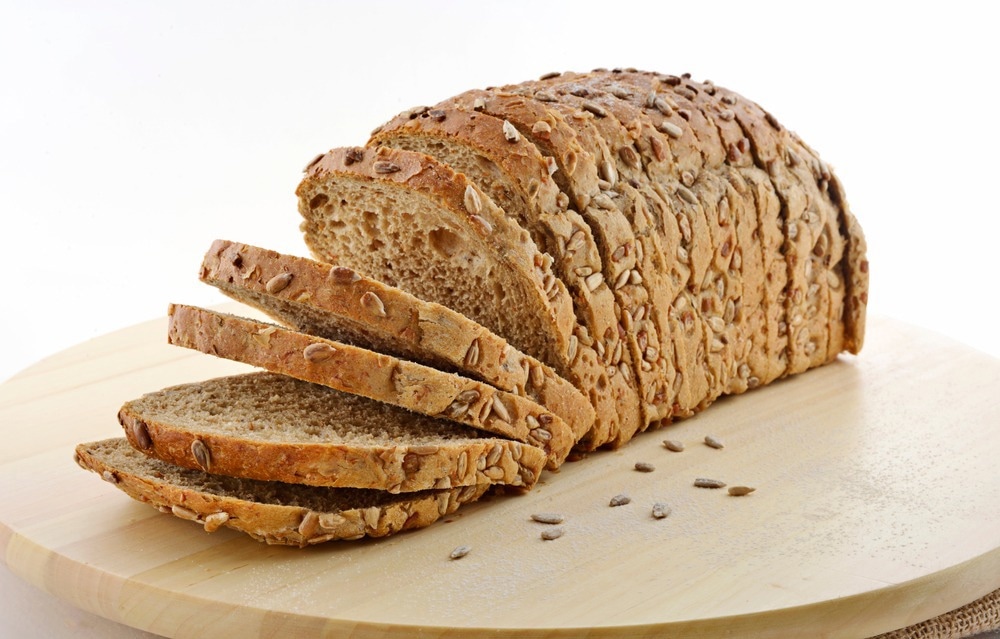In a recent study published in the journal Nutrients, researchers discuss the results of a randomized controlled trial (RCT) evaluating the impact of low-insulin-stimulating bread on weight development.

Study: Impact of a Low-Insulin-Stimulating Bread on Weight Development—A Real Life Randomised Controlled Trial. Image Credit: Brand Builders Dubai / Shutterstock.com
The impact of bread on weight
Bread provides carbohydrates, protein, fiber, vitamins, minerals, and various other bioactive substances. Bread comprised of refined/white wheat flour or milled whole grains has high insulin and glycemic indices. Hyperinsulinemia and carbohydrate-rich diets increase the risk of obesity, cardiovascular diseases, and type 2 diabetes mellitus.
Low-insulin-release lifestyles have been related to clinically significant weight loss. Thus, reducing the intake of ingestible carbohydrates is an effective weight-loss strategy, whereas the consumption of highly processed bread increases the risk of obesity. Therefore, conscious selection of bread could significantly affect weight management.
About the study
In the present study, researchers determine the insulin stimulation potential of different types of bread to determine whether the consumption of low insulin-releasing bread can significantly affect an individual’s weight.
The single-center triple-blinded RCT was conducted to analyze the effects of two different types of bread on body weight without further lifestyle changes among adults who had a body mass index (BMI) exceeding 27.0 kg/m2 and ate bread regularly. Eighty obese adults were allocated in a 1:1 ratio to receive medium-carbohydrate, low-level insulin-releasing bread, or rye bread baked from milled whole grains, the latter of which served as the control.
The primary endpoint was the estimated treatment difference (ETD) in a change of body weight after three months of treatment. Secondary study outcomes included ETD changes in hip circumference, BMI, blood pressure, waist circumference, total cholesterol, triglycerides, low-density lipoprotein (LDL) cholesterol, high-density lipoprotein (HDL) cholesterol, glycated hemoglobin (HbA1c), fasting blood sugar and insulin levels, lean mass, and fat mass.
Insulin and glucose levels were monitored in venous blood samples collected every 30 minutes over a two hour period. Individuals were enrolled based on newspaper reports.
In the period from August 1, 2020, to October 21, 2021, 90 individuals were screened. Of these 90 individuals, six individuals and 80 individuals participated in the pre-test evaluations and RCT, respectively.
During the pre-test, following overnight fasting, individuals ingested 50 g of 10 different types of bread during similar morning hours on consecutive days in a random sequence, during which continuous glucose monitoring (CGM) was performed. Individuals were excluded if they suffered from acute disorders or severe diseases managed with inpatient therapy in the previous three months, were taking weight-lowering medications, had weight changes of more than two kilograms weekly in the previous month, quit smoking in the previous three months, or had an intolerance to constituents of the bread investigated.
The study participants returned to the center after three months of study intervention to provide anthropometric measurements including height, body weight, BMI, blood pressure, waist circumference, fat mass, and lean weight. Study participants were unaware of the type of bread they consumed and refrained from eating other bread types, rolls, and other baked items for three months.
Results
Among the participants, 86% completed the allocated study interventions. Pre-test findings indicated that the two bread types elicited significantly different insulin and glucose responses but had comparable energy content, taste, and texture.
Four types of bread were identified with medium carbohydrate (14%) and low digestible carbohydrate (3% to 4%) content, which differed significantly from bread with the usual digestible carbohydrate content of 38% to 54%.
Body weight was significantly reduced in the low-insulin-releasing bread recipients by an average of 1.80 kg, with an ETD of -1.70 kg. This effect was particularly evident among individuals over the age of 55 years who lost an average of 2.60 kg, along with significantly reduced hip circumference and BMI. Additionally, among low-insulin-releasing bread consumers, the proportion of individuals with significant weight reductions exceeding one kilogram was double that of rye-bread consumers.
The rye-type bread comprised type 997 of flour, whereas the low-insulin-releasing bread comprised sunflower seeds, oat flakes, psyllium husks, chia seeds, baker’s honey, flax seeds, Rhinish field beans, and chopped almonds. The consumption of rye, pretzel sticks, spelt, white, whole-meal bread, and buckwheat increased blood glucose levels by 20 to 35 mg/dL, with a peak within 45 minutes.
Medium- and low-carbohydrate bread consumption did not significantly elevate blood glucose levels over two hours. No adverse events associated with bread consumption were reported. The relevance of blood insulin levels in weight loss gave rise to the carbohydrate-insulin-concept, thus indicating that low-fat diets are inferior to low-glycemic diets for weight loss.
Overall, the study findings showed that substituting the commonly consumed insulinogenic bread with bread releasing low levels of inulin could significantly reduce weight among obese individuals, particularly the elderly.
Journal reference:
- Kempf, K., Röhling, M., Kolb, H., & Martin, S. (2023). Impact of a Low-Insulin-Stimulating Bread on Weight Development—A Real Life Randomised Controlled Trial. Nutrients. doi:10.3390/nu15051301